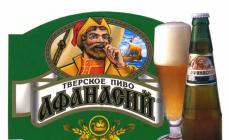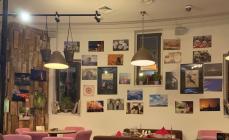The portal site and the expert center of the Union of consumers "Roskontrol" continue publications in the framework of the project "Verification of Roskontrol". Recall that our task is to give you reliable and timely information about the quality of products and industrial goods that we use every day.
Curd cheese is convenient, it is inexpensive and at first glance even seems helpful. However, according to the experts of Roskontrol over the past 5 years, especially to believe the manufacturers of raw materials and count on their high quality.
Roskontrol sent seven samples of glazed cheese to the laboratory: "Svitylogorier", "Soviet traditions", "Nostalgia", "Creator", "Rostagroexport", "Bill", "B. Y. Alexandrov. " Two brands - "Soviet traditions" and "B. Y. Aleksandrov "- made according to GOST, the rest - by technical conditions manufacturers.
But, as the study showed, no inscriptions on packages and security.
As on yeast
About the main thing about security. In five samples from the seven experts discovered excess regulations on the content of yeast. The technical regulation admits not more than 100 CFU / g. Some are colony-forming units, that is, the number of microorganisms per square centimeter. So, according to this indicator, some manufacturers have been much overpowered. For example, in the raw "Soviet traditions" of yeast, more than 14 times, but in "Rostagroexport" - 140 times, and in "Nostalgia" - in general 150 times! Against this background, brute force with microorganisms in the raw materials "Bill" and "B.Yu. Alexandrov "5.5 and 2 times, respectively, looks quite innocent. But this is a violation of the security requirements of the technical regulation.
Everything was well with the yeast in the "Creativeness", but there revealed the presence of a small amount sorbic acid -, whose use in curd raws is unacceptable.
Only Svitlogorier routine complies with security requirements for all verified indicators.
For violation of safety requirements, samples "Soviet traditions", "Nostalgia", "Rostagroexport", "Bill", "B. Y. Aleksandrov "lists Roskontrol.
Starch fake?
Signs of falsification found in the product "Soviet traditions". There were defined not specified in the starch. The fact that the starch was not in the list of ingredients is understandable - its use is not allowed in the manufacture of curd cheese. Recall that the "Soviet traditions" is one of two raw materials with the marking of GOST. Also in this sample experts found that its titratable acidity is below the minimum values \u200b\u200bthat have been allowed by the standard. So the "Soviet traditions", alas, were devoid of traditional quality.
Food pricelessness
All raw materials indicate the percentage of fatty. And we and we are gullible buyers, not only believe written, but also choose raw materials in accordance with their tastes. In reality, it turned out that these figures with real data do not coincide: in the samples "Svitylogorsa", "Nostalgia", "Rostagroexport", "Bill" The fat content of the cottage cheese foundation was less than the package declared. And the most "dietary" "creatures" turned out to be greater than the manufacturer promises.

It turned out that it is not worth navigating on the labeling.
Sugar, butter, vanillin. Often, routines are covered with chocolate icing. The mass of the glazing raw is usually from 40 to 50 grams.
Encyclopedic YouTube.
1 / 1
✪ Glazed Chocolate Cheeses / Delicious, Home / Step-by-Step Recipe
Subtitles
The nutritional value
Glazed raws differ in high nutritional capacity due to the high content of proteins and carbohydrates. Cottage cheese proteins are better absorbed by the body than fresher milk proteins.
History
Curd cheese for the first time began to be made in the USSR in the 1930s (there is a version for which raw materials were made back in the XIX century in Altai). In the Soviet stores, raws appeared in the 50s and quickly became popular. Sweet vanilla flavor really liked children and brittle chocolate glaze He was an independent delicacy that many children were bite, and then ate a raw mass. Some parents tried to give the glazed cheese for a population, especially when children had a throat. In the late 1980s, glazed raw materials have become a deficit.
In the early 1990s, the raws again appeared on the shelves, the range consisted of two types: vanilla and cocoa. After 1995, the number of manufacturers increased dramatically, and the choice of raw materials was also significantly expanded: raw materials appeared with fillers, layers, biscuits.
The first glazed raw materials were packaged in foil, which did not provide the product with tightness, so the shelf life of such raws did not exceed 3 days. After introducing hermetic packaging, it became possible to extend the shelf life of the cheek to 15 days in the refrigerator and 60 days in a frozen form without using preservatives.
Spread
Glazed raw materials are most popular in the CIS countries, in the Baltic countries, in Hungary (called "Tougur Rudi"). According to the Museum of Glazed Cheese, more than 15 countries of the world produced glazed raw materials.
The first production of glazed raws in newest Story Russia has become a commercial structure, which organized the production of glazed raw materials in the village of Voronovo in the Moscow region. Then she crashed into two firms that produced glazed raw materials in Moscow already in a larger assortment under trademarks "Milk plant" Preobrazhensky "and" Aguna ".
Those who are thirty, perfectly remember what kind of unearthly delicacies seemed glazed cheek to children of the Soviet Union. Now growing up in the USSR try and try different glazed raws, trying to find the same cheese - "with the taste of childhood." But for some reason they do not find. Why?
You can answer that they were lit. And it is possible, as journalists of the "Arguments and Facts" edition, try to find out what the glazed raws are distinguished by the time of building communism from the current ones. And that's what they managed to find out.
Where are you, cottage cheese?
As GOST R 52790-2007, glazed raw materials should be made of subpressive cottage cheese. Journalists "AIF" gave for examination nine names of raw materials and found that raw materials satisfying this GOST, they could not be purchased.
However, they did not count on this, as there were no GOST on the packs of glazed raws. And the one was. However, according to the specified TU, raw materials should be made of natural curd. That's just an examination showed that instead of cottage cheese in raw materials there is a "cottage cheese", that is, a mixture, which includes some powder cottage cheese and vegetable fats.
Oil cow gave?
The second mandatory ingredient of glazed raw, along with natural cottage cheese, is butter. Creamy oil is obtained from milk, which gives a cow, it does not grow on trees. Or grow?
As the examination of glazed raw materials has shown, then oil, that they are put on, plant origin. No, it is not butter, but a kopeck spread made from coconut or palm oil.
Glaze without chocolate
And finally, the third mandatory component of raw materials is chocolate glaze. It is chocolate, that is, such a glaze, when the preparation of which was used cocoa butter. But it is in theory.
And in practice, the examination showed that in the glaze of raw materials instead of cocoa oil there is a lauric acid all of the same palm oil. There are, of course, in the glaze of cocoa powder, as well as a fair number of different emulsifiers and flavors.
So, of the three main components of the glazed raw - cottage cheese, butter And the glazes - no component is what he should appear.
How then to take "childhood taste"? After all, in the USSR, the raw materials were made in accurately according to Goste. And modern children can only sympathize: they are not lucky to taste a real glazed cheese.






